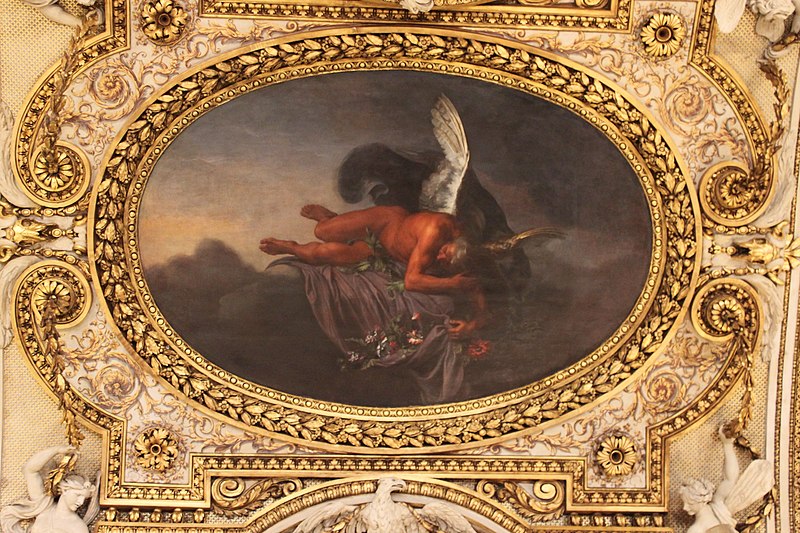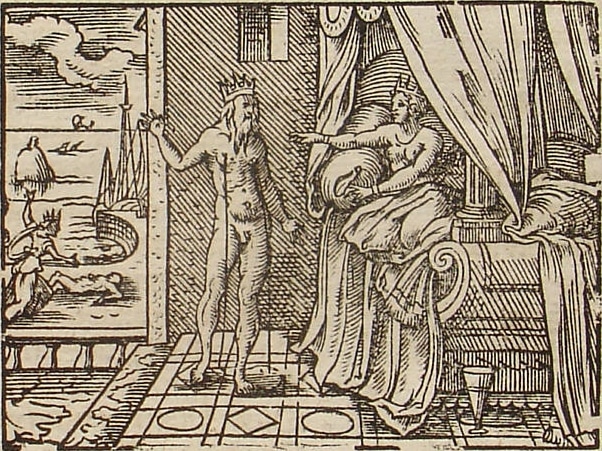The mere mention of Morpheus’ name evokes a sense of mystery and wonder. As the god of dreams in Greek mythology, Morpheus has fascinated scholars, artists, and dreamers alike for centuries. But who is he really? Let’s delve into the enigmatic world of this lesser-known deity and explore his various facets, from his origins to his role in ancient myths and modern interpretations.
Morpheus Key Facts
| Parents | Nyx and Erebus |
| Partners | None known |
| Siblings | Phobetor and Phantasos |
| Offspring | None known |
| Other Names | None |
| Roman Name | Morpheus |
| The God of | Dreams |
| Symbols | Poppies, Wings |
Name and Etymology
The name “Morpheus” is derived from the Greek word “morphē,” which means “form” or “shape.” This etymology is quite fitting, considering his ability to take on any human form in dreams. In Roman mythology, he retains the same name, a rarity as many Greek gods undergo a name change when adopted by Roman culture. While Morpheus doesn’t have many epithets, he is sometimes referred to as the “Shaper of Dreams.”

Charles Le Brun, Public domain, via Wikimedia Commons
Morpheus Origins
Morpheus’s lineage is a tapestry woven from the darker threads of Greek mythology. He is one of the Oneiroi, the gods of dreams, born to Nyx, (Night), and Erebus (Darkness). His family tree, as detailed in Hesiod’s “Theogony,” places him among a host of deities associated with the more somber aspects of life and death. Hesiod writes, “And Nyx (Night) bare hateful Moros (Doom) and black Ker (Violent Death) and Thanatos (Death), and she bare Hypnos (Sleep) and the tribe of Oneiroi (Dreams).” This lineage situates Morpheus within a family that governs over various facets of the human condition, from sleep to death.
His realm is often described as a dark, cave-like domain, a fitting abode for a deity born from Nyx (Night) and closely related to Erebus (Darkness). This shadowy realm is adorned with poppy flowers, symbols of sleep and dreams, and is located in the underworld. Here, Morpheus resides near his father Hypnos and his uncle Thanatos, the personification of death, further emphasizing his connections to the darker aspects of existence.
Morpheus Relationships and Offspring
Morpheus is a bit of an enigma when it comes to romantic relationships. Unlike many gods in the Greek pantheon, he doesn’t have a long list of lovers or consorts. In fact, he’s often portrayed as a solitary figure, focused more on his duties than on romantic entanglements.
Similarly, there’s no record of Morpheus having any offspring, either divine or mortal. His role in mythology seems to be more functional than familial, emphasizing his unique abilities rather than his relationships or lineage.
Depiction And Characteristics
Morpheus is often depicted as a young man with wings on his back, symbolizing his ethereal nature and ability to traverse the dream world. He’s also frequently shown holding a bunch of poppies, a nod to his association with sleep and dreams.
As the god of dreams, Morpheus is a complex figure. He’s neither entirely benevolent nor malevolent. He serves as a messenger for the gods, but he also has a mischievous side, capable of creating nightmares or deceptive visions.
Morpheus Powers and Symbols
In Greek mythology, Morpheus serves as a Daemone, a type of spirit that personifies a concept—in this case, dreams. Morpheus had the unique ability to enter the dreams of mortals and shape them, often delivering messages from the gods or offering prophetic visions. His abilities make him an essential figure in the pantheon, albeit one that operates from the shadows, influencing both the mortal realm and the divine in subtle yet profound ways.
Morpheus is closely associated with poppies and wings. Poppies symbolize sleep and dreams, while wings represent his ability to move freely between the mortal world and the realm of dreams. There’s no specific animal tied to him, which is fitting for a god who exists in the abstract realm of the subconscious.
Morpheus Roles And Responsibilities
Morpheus had a very specific role in Greek mythology: to shape and influence dreams. He was the go-to deity for gods who wanted to send messages or prophecies to mortals via dreams. His abilities made him an essential, if somewhat overlooked, figure in the pantheon.
He also had a role in guiding the souls of the dead. In some myths, Morpheus assists his father Hypnos and his uncle Thanatos in this somber duty, providing a peaceful transition for those passing into the afterlife.
Lastly, Morpheus had a role in the realm of art and inspiration. Many ancient poets and artists claimed to have been visited by him, receiving visions that they would later translate into their works.
Myths about Morpheus
Morpheus is not as prominently featured in myths as some other gods, but he does make a few notable appearances.
The Dream of Alcyone
In one of the most poignant myths involving Morpheus, he takes on the form of King Ceyx to appear to his wife, Alcyone. Ceyx had perished in a shipwreck, and Morpheus was tasked with delivering this tragic news. Transforming into the spitting image of the king, he entered Alcyone’s dream. The setting was somber, mirroring the depths of the ocean where Ceyx had met his end.
Morpheus, as Ceyx, spoke softly, detailing the tragic events that led to his demise. He urged Alcyone to perform the funeral rites and to find the strength to move on. The dream was so vivid, so filled with the nuances of her husband, that Alcyone woke up knowing it was a message from beyond. This myth showcases Morpheus’s role as a messenger between realms, but also his capacity for empathy, delivering the message with the gentleness and love that Ceyx himself would have offered.
Morpheus and Hera’s Scheme
In another tale, Morpheus becomes an accomplice in one of Hera’s schemes to distract her husband, Zeus. Hera, ever jealous of Zeus’s numerous affairs, needed to divert his attention away from one of his mortal lovers. Who better to call upon than the master of dreams and illusions?
Morpheus entered Zeus’s dream, taking on the form of an urgent messenger. He spun a tale of a crisis that required immediate divine intervention, convincing Zeus that his lover was in danger. The dream was so compelling that Zeus immediately left to attend to this fabricated emergency. This gave Hera the window of opportunity she needed to enact her plans.
In this myth, Morpheus’s role is more ambiguous. He serves the gods, yes, but in doing so, he becomes a party to deception and manipulation. It’s a complex portrayal that adds layers to his character, showing that even gods of dreams have to navigate the murky waters of morality.
These myths not only highlight Morpheus’s unique abilities but also offer a glimpse into his complex character. Whether serving as a gentle messenger or a cunning accomplice, Morpheus remains an enigmatic figure, forever shaping the dreams and stories of both gods and mortals.
Representations Of Morpheus In Art
Morpheus has been a subject of fascination for artists throughout history. One of the most famous depictions is that of Jean-Bernard Restout, who painted Morpheus as a winged youth surrounded by poppies. This painting captures the ethereal, mysterious nature of the god beautifully.

Mentions in Ancient Texts
Morpheus is not as frequently mentioned as some other gods. However he does make appearances in ancient texts that offer valuable insights into his lineage and role. One of the earliest mentions can be found in Hesiod’s “Theogony,” an epic dating back to the 8th or 7th century B.C. In this text, Hesiod describes the offspring of Nyx (Night), mentioning Hypnos (Sleep) and the tribe of Oneiroi (Dreams), of which Morpheus is a part. The text reads:
“And Nyx (Night) bare hateful Moros (Doom) and black Ker (Violent Death) and Thanatos (Death), and she bare Hypnos (Sleep) and the tribe of Oneiroi (Dreams).”
This passage places Morpheus within a family of deities associated with various aspects of human life and death. Furthermore emphasizing his role as a god of dreams within this darker, more mysterious family.
In Roman literature, Pseudo-Hyginus, a mythographer from the 2nd century A.D., also mentions the Oneiroi in his “Preface.” He lists them among the offspring of Nox (Night) and Erebus, translating Hypnos as Somnus and the Oneiroi as Somnia. This Roman interpretation aligns closely with the Greek understanding of Morpheus and his siblings.
“From Nox (Night) and Erebus [were born]: Fatum (Fate), Senectus (Old Age), Mors (Death), Letum (Dissolution), Continentia (Moderation), Somnus (Sleep), Somnia (Dreams) [i.e. the Oneiroi], Amor (Love)–that is Lysimeles, Epiphron (Prudence), Porphyrion, Epaphus, Discordia (Discord), Miseria (Misery), Petulantia (Wantonness), Nemesis, The Goddess of Retribution, Euphrosyne (Good Cheer), Amicitia (Friendship), Misericordia (Compassion), Styx, The Goddess of the Underworld River (Hatred); the three Parcae (Fates), namely Clotho, Lachesis and Atropos; the Hesperides.”
Frequently Asked Questions
Morpheus is the god of dreams in Greek mythology.
Yes, he has two brothers, Phobetor and Phantasos, who are also gods of dreams.
His primary symbols are poppies and wings.
There are no known temples dedicated solely to Morpheus.
There is no record of Morpheus having
Featured Image Credit: Jean-Bernard Restout, Public domain, via Wikimedia Commons
